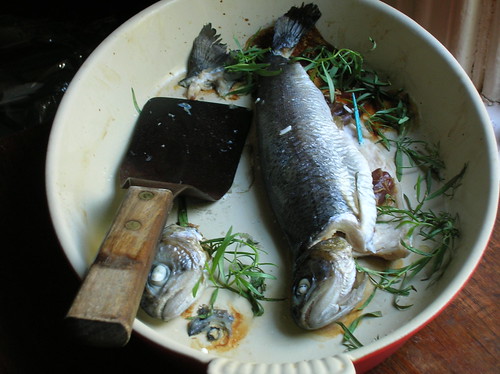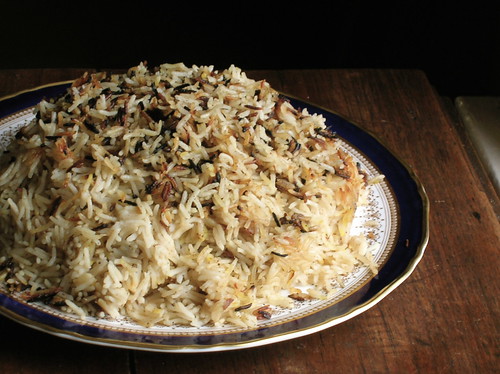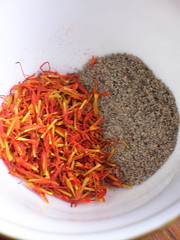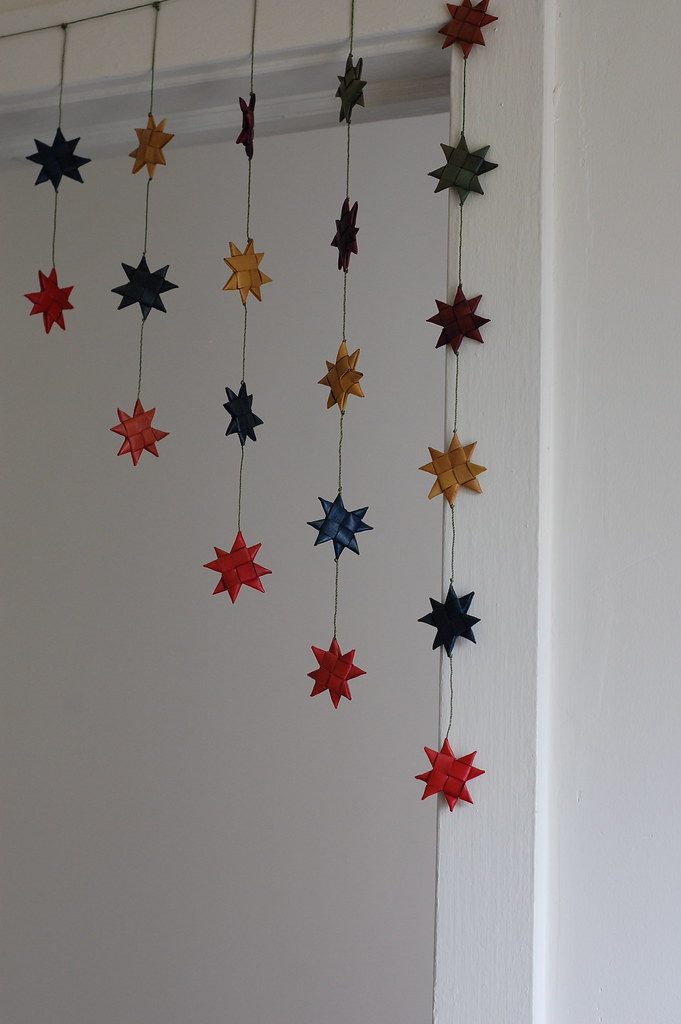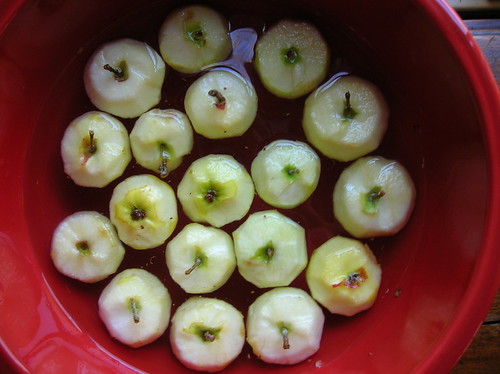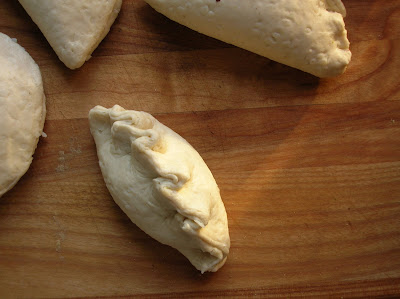 I feel as if nothing is quite going my way at the moment, and I'm running after life just trying to keep up. It's as if my schedule is a giant hopscotch game constantly unfurling in front of me, and I'm trying to land on each meeting, class, and train as it appears, teetering on one foot then the other. Really, it's not that bad, I'm getting along just fine, but a few moments to catch my breath, outside my office, would be nice. I've only skimmed the cartoons in the past four New Yorkers and I just picked up the copy of February's Gourmet from my nightstand. I've barely been home enough to cook, and not cooking for me, is like not exercising or not talking. It's one of life's essentials, and without it I'm awash in a sea of cafeteria options and take out menus and things I could make much cheaper and tastier in my own kitchen.
I feel as if nothing is quite going my way at the moment, and I'm running after life just trying to keep up. It's as if my schedule is a giant hopscotch game constantly unfurling in front of me, and I'm trying to land on each meeting, class, and train as it appears, teetering on one foot then the other. Really, it's not that bad, I'm getting along just fine, but a few moments to catch my breath, outside my office, would be nice. I've only skimmed the cartoons in the past four New Yorkers and I just picked up the copy of February's Gourmet from my nightstand. I've barely been home enough to cook, and not cooking for me, is like not exercising or not talking. It's one of life's essentials, and without it I'm awash in a sea of cafeteria options and take out menus and things I could make much cheaper and tastier in my own kitchen.Each day, as I rush off to this or that, I think guiltily about the groceries I bought with optimism last week, slowly wilting in the fridge. It seems my own eating schedule has gone out the window as well: those cookies someone brought into the office, they'd make the perfect morning snack. That annoying boy who didn't call you back, he convinced you to have ice cream at 7 p.m. (granted I don't need much convincing to eat ice cream, ever). And when you finally get an evening at home with nothing on your agenda, you find shriveled week-old bok choy, hummus, some moldy ricotta cheese, and a jar of salsa in your fridge.

This, my friends, is what the freezer is for. I am a strong advocate that the freezer is a cook's great friend. And even when you haven't had time to cook, and you have the urge for something tasty and completely-out-of-season spring-like because, damn it, you are really sick of wearing winter coats and getting up in the dark and bundling yourself in the cold every day; and you just want something bright and vibrant, and a little healthy too, for a quick dinner. Which is why I have a bag or artichoke bottoms, frozen peas, and edamame in my freezer. Don't you?
Well, you should. I've been making this recipe for many years, originally adapted from one by Claudia Roden I believe, though it fits into that pantheon of spring dishes like vignarola that can be found around the Mediterranean. Just make sure to get artichoke bottoms (not hearts, you can also get canned as opposed to frozen ones), and I find edamame make a great substitute for hard-to-find fava beans. Dressed up with a minty-lemon sauce and topped with a few toasted almonds, all those train-chasing, rush hour traffic- grating, cookie-guilt, boy-hating thoughts will fade right from your head. At least until tomorrow.

Artichokes, Peas, and Edamame
While Egyptian in origin, this is one of those bright spring dishes that can be found all over the Mediterranean. I often substitute edamame for the more expensive fava beans, and since all these ingredients are freezer-friendly it means you can have it any time of year. Which in that last stretch of winter, is a very welcome thing indeed.
6-8 artichoke bottoms, frozen, canned, or fresh
2 cups frozen baby peas
1 cup frozen shelled edamame or fava beans
3 tablespoons olive oil
juice of 1 lemon
1/2 teaspoon cornstarch dissolved in 1 tablespoon water
pinch salt
1 tablespoon slivered fresh mint
2 tablespoons slivered almonds, toasted
1. Heat a large pot of water to boil. Working in batches, cook the artichoke bottoms, peas, and edamame only until they are defrosted, do not over cook. Drain in a colander.
2. In a medium-sized pot place the olive oil, lemon and cornstarch mixture. Heat the mixture gently to warm. Add the vegetables and cook over medium heat for 3-5 minutes, until the sauce is slightly thickened and the vegetables are heated through. Stir in the mint.
3. Pile on a serving platter. For a fancier presentation, arrange each artichoke bottom on the plate and carefully spoons the pea mixture into each artichoke cup. Top with toasted almonds.

